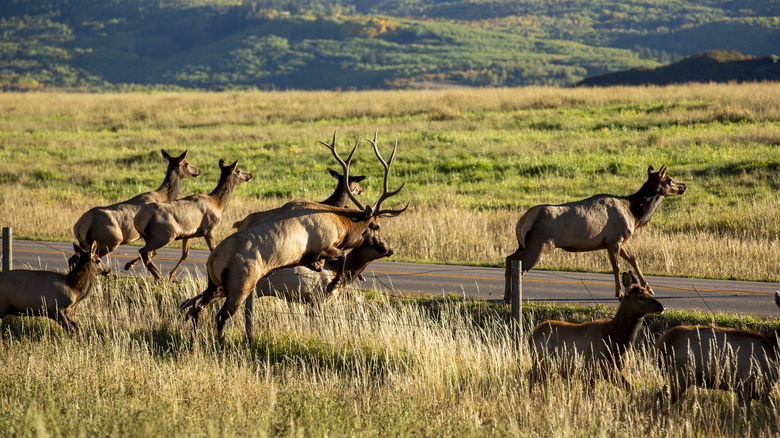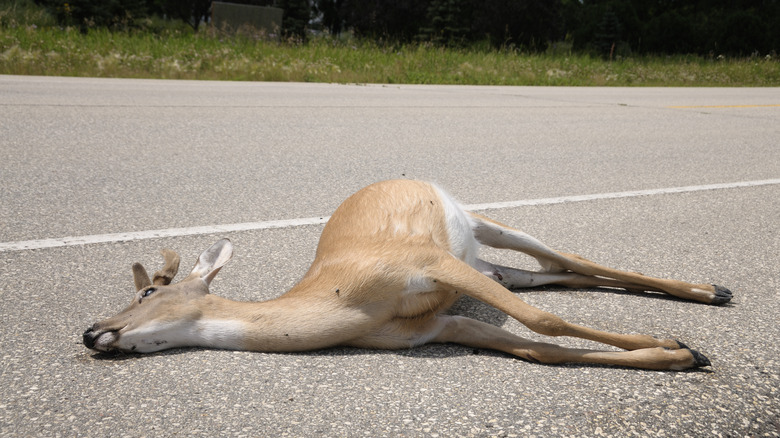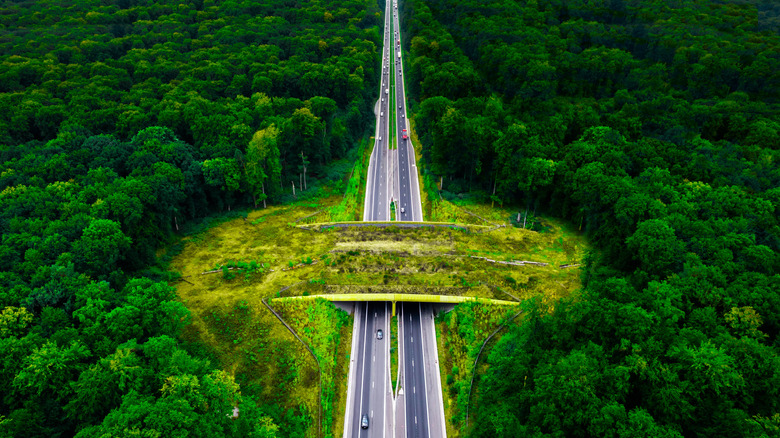The Upsetting And Unsafe Reason Highway 89 Into Yellowstone Is Referred To As A 'Bloodbath'
Yellowstone National Park is on everyone's camping bucket list and is arguably the most famous patch of wilderness in the U.S., and for good reason. This stunningly beautiful, 2,221,766-acre reserve was not only the first national park in the country, but also the world. It features thousands of square miles of lakes, canyons, pristine rivers, grasslands, forests, as well as the iconic geysers that help make it such a unique piece of real estate.
With around 4.5 million visitors each year, Yellowstone is also one of the most popular parks in America. And with that many humans come problems. While this often means crowds, noise, and littering — not to mention other upsetting tourist mistakes such as getting too close to the wildlife — it's the visitors' vehicles that actually do the most harm. Driving in or around the park is actually the most dangerous activity in Yellowstone you can partake in.
This is especially true on Highway 89, part of which runs between Livingston and Gardiner, the town that sits at Yellowstone's North Gate. While veering off the road or having an accident with another car is always a danger, it's the area's abundant wildlife that poses the biggest risk. The highway is the site of a sickening number of vehicle-animal collisions, which not only poses a danger to drivers, but tragically impacts the wildlife as well.
Death by the side of the road on Highway 89
Situated between two mountain ranges and following the flow of the Yellowstone River, the valley Highway 89 runs through is a magnet for wildlife that can't resist the grass and alfalfa available on much of the area's farmland. The region is home to deer, elk, bison, moose, bighorn sheep, pronghorn antelope — as well as plenty of smaller critters, birds of prey, and big predators such as cougars and grizzly bears.
This high concentration of wildlife — along with the fact that the North Gate of Yellowstone sees around 400,000 vehicles pass through a year — is a cocktail for disaster, so much so that Highway 89 is sometimes referred to as a "bloodbath." Between 2012 and 2023, over 1,700 elk, deer, and moose were killed on the road. About half of the traffic collisions on Highway 89 involve wildlife, which is 10 times the national average. This isn't just bad news for the animals: Humans can also be injured or even killed in these accidents, and the damage to the vehicle — not to mention any subsequent medical bills — can easily tally into the thousands.
The roadkills lining the shoulder of Highway 89 are a testament to the fact that, even though we create national parks to preserve wildlife, the parks' ensuing popularity can end up doing harm to the very creatures we're trying to protect. Luckily, there are now some very effective ways to reduce the roadside carnage that are finally being put into action.
Safe crossings for our furry friends on Highway 89
The idea of wildlife crossings first came about in Europe in the 1950s. While pioneered in France, the concept really took off in the Netherlands, which boasts over 600 of these green bridges today. These overpasses provide a safe way for animals to cross a road and have been shown to reduce the number of wildlife killed by cars by up to 80%.
While the notion of "critter crossings" took longer to catch on in the U.S., today there are more than 1,500 wildlife overpasses and tunnels in 43 states, and the animals are using them in a big way. This has caused Yellowstone Safe Passages — a coalition of citizens, groups, and government agencies aiming to make the region safer for both wildlife and drivers— to take notice, and now there are plans underway to construct wildlife crossings at two of the worst roadkill hotspots on Highway 89. Highway 89 is by no means the only hazardous stretch of road in the American West. Here's a dangerous highway in Arizona that may be best to avoid on your next road trip.


